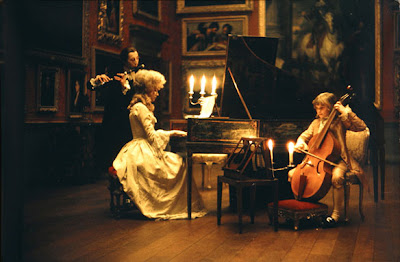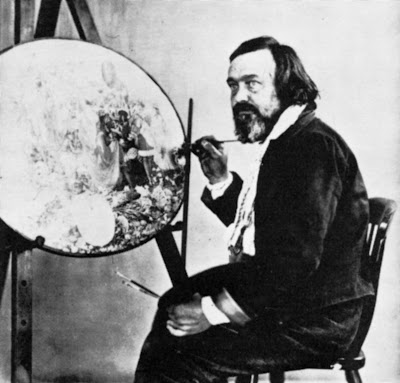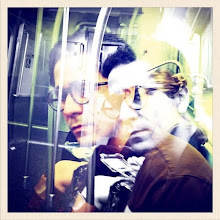In a Letter to Roger Cotes, Cambridge mathematician who proofread second edition of the Principia, Newton is ambivalent about hypotheses:
'For anything which is not deduced from phenomena ought to be called a hypothesis, and hypotheses of this kind, whether metaphysical or physical, whether of occult qualities or mechanical, have no place in experimental philosophy. In this philosophy, propositions are deduced from phenomena, and afterward made general by induction…'
In Newton’s scientific system, induction, or the movement upward from observed phenomenon to general law, is highest status a proposition can attain. Before a proposition can make sublimation to law, it must be supported by proof derived from experiment. But before proof can be applied to an idea, there must be formulated proposition of that idea. Seems contrary then that a hypothesis should not be formed previous to experimentation. Newton’s resistance to hypotheses suggests that they are involved in a personalization of experiment, which might compromise the supposed objectivity of experiment. Newton would like to suggest it possible to get at truths from a position that is supra-lingual; that, by observation and experiment, the experimental scientist might work their way inward from phenomena through nebulous proposition(s) to axiomatic truth. In an earlier letter to Roger Oldenburg, original fellow at the Royal Society, Newton is less guarded about his philosophy:
'…For the best and safest method of philosophizing seems to be, first, to inquire diligently into the properties of things and to establish those properties by experiments, and to proceed later to hypotheses for the explanation of things themselves. For hypotheses ought to be applied only in the explanation of the properties of things, and not made use of in determining them; except in so far as they may furnish experiments. And if anyone offers conjectures about the truth of things from the mere possibility of hypotheses, I do not see by what stipulation anything certain can be determined in any science; since one or another set of hypotheses may always be devised which will appear to supply new difficulties. Hence I judged that one should abstain from contemplating hypotheses, as from improper argumentation…'
Although Newton keeps caveat that hypotheses may be useful in furnishing experiment, their epistemological status is nonetheless secondary to experiment in his scientific system. He would like to pretend that experiment might be possible without the pernicious fact of language. Certainly, Newton was not harboring the sort of polemical attitude to language in science that we find in somebody like Bruno Latour:
'In actual practice, one never travels directly from objects to words, from the referent to the sign, but always through a risky intermediary pathway.'
Newton’s faith in the enlightening wholeness and totality of the natural world would not permit such statement. But the surfacing of certain ambiguity and even arbitrariness regarding the import of symbols is another matter. As early as Locke, there is a challenge to the claim that linguistic symbols are essential to the referent they represent. Language is identified as socially constructed; non-inherent to the things it names. Taking as premise this configuration of language as external and essentially alien to the things it stands for, Newton’s other, less surveyed writings, especially on theology, align more compositely with his better-known scientific works. When his natural philosophy, as an attempt to prioritize objectivity in linguistic exchange, is applied in theological investigation, the substance of those investigations (i.e. the Bible) loses textual objectivity, or totality, and becomes open to as many permutations and complications as are active in the natural world that it is supposed to explain.
Fact of science is that it becomes a social construction the moment a phenomenon is observed. Language subsumes observation from that moment of observance until and through the (possible) sublimation of observation to law. The exegetic potential within any scientific law further suggests that language never releases phenomena after phenomena have been formatted through language to data and facts. I have folded a number of passages of Newton on Moses into one, from a letter to Thomas Burnet:
'As to Moses, I do not think his description of the creation either philosophical or feigned, but that he described realities in a language artificially adapted to the sense of the vulgar. Thus when he speaks of two great lights, I suppose he means their apparent, not real greatness. So when he tells us God placed these lights in the firmament, he speaks I suppose of their apparent, not real, place, his business being, not to correct the vulgar notions in matters philosophical, but to adapt a description of the creation as handsomely as he could to the sense and capacity of the vulgar… To describe [things] distinctly as they were in themselves would have made the narration tedious and confused, amused the vulgar, and become a philosopher more than a prophet... If it be said that the expression of making and setting two great lights in the firmament is more poetical than natural, so also are some other expressions of Moses, as when he tells us the windows or floodgates of heaven were opened (Genesis 7) and afterward stopped again (Genesis 8), and yet the things signified by such figurative expressions are not ideal or moral but true…'
Surrounding this argument on the fictive in Moses’ dyadic firmament, there is a lengthier discussion of the six days that it took to create the earth. Newton's six days are ideational, each assigned the sense of a day according to the thing created, in order to convey the notion of diurnal, developmental creation. Grammar is secondary to rhetoric. According to Newton, Moses is configuring his description of the creation of the universe to create a sense of aesthetic wholeness or continuity. The implication is that the textual objectivity of Moses as we receive it from the Bible is undercut by and not correlative to the natural objectivity of the universal process of creation. Moses’ rhetorical purpose receives primacy in Newton’s reading of him. Additionally, if we concede, as I suspect we must, to Newton the idiosyncrasy of his intellectual engagement, the probability that he is as heavily invested in the factuality of his reading of Moses as he is in the factuality of observations sublimated to scientific truth, we must assume that Newton arrived at his conclusion of Moses by means parallel to those used in scientific experiment.
In essence, it must be assumed that Newton submitted Moses to as much experimental rigor as was received by his theory of gravity or light. Moses too must be a conclusion from deduction to induction. Moses, too, has received the burden of experimentation. There is, however, no materiality to Moses. He is undeniably, in so far as he is concerned to Newton, an idea—-a rhetorical template placed by God—-by which Newton could extend his own understanding of the genesis and nature of the physical world. Between the theological and the scientific, the permeability is not defined as faith against fact. These are not spheres in conflict. Experimental capacity suffuses all manner of observation, especially when channeled through language. Moses’ sagacity, to Newton, is determined by his nimble manipulation of the amorphousness of language.
De Man on Locke:
''Abuse' of language is, of course, itself the name of a trope: catachresis. This is indeed how Locke describes mixed modes. They are capable of inventing the most fantastic entities by dint of the positional power inherent in language. They can dismember the texture of reality and reassemble it in the most capricious of ways, pairing man with woman or human being with beast in the most unnatural shapes. Something monstrous lurks in the most innocent of catachreses: when one speaks of the legs of the table or the face of the mountain, catachresis is already turning into prosopopeia, and one begins to perceive a world of potential ghosts and monsters. By elaborating his theory of language as a motion from simple ideas to mixed modes, Locke has deployed the entire fan-shape or (to remain within light imagery) the entire spectrum or rainbow of tropological totalization, the anamorphosis of tropes which has to run its full course whenever one engages, however reluctantly or tentaviely, the question of language as figure. In Locke, it began in the arbitrary, metonymic contiguity of word-sounds to their meanings, in which the word is a mere token in the service of the natural entity, and it concludes with the catachresis of mixed modes in which the word can be said to produce of and by itself the entity it signifies and that has no equivalence in nature. Locke condemns catachresis severely: 'he that hath IDEAS of substances disagreeing with the real existence of things, so far wants the materials of true knowledge in his understanding, and hath instead thereof CHIMERAS... He that thinks the CENTAUR stands for some real being, imposes on himself and mistkes words for things' (bk. 3, chap. 10, p. 104). But the condemnation, by Locke's own argument, now takes all language for its target, for at no point in the course of the demonstration can the empirical entity be sheltered from tropological defiguration. The ensuing situation is intolerable and makes the soothing conclusion of book 3, entitled 'Of the Remedies of the Foregoing Imperfections and Abuses [of Language],' into one of the least convincing sections of the Essay. One turns to the tradition engendered by Locke's work in the hope of finding some assistance out of the predicament.''
ie. Newton or, more dynamically, Newton through Edwards. More on this at some other point. This post is meant as tribute to the genius of Isaac Newton














.jpg)








